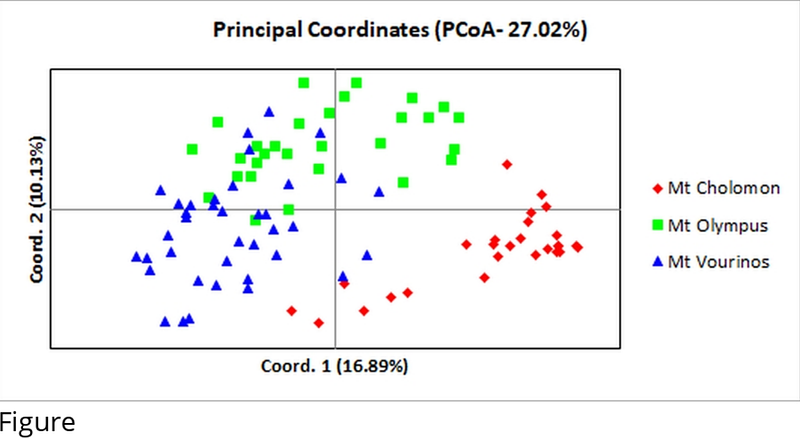Genetic, epigenetic and metabolite variation in peripheral European Yew (Taxus baccata L.) populations at an unexplored part of the species natural distribution

Genetic, epigenetic and metabolite variation in peripheral European Yew (Taxus baccata L.) populations at an unexplored part of the species natural distribution
Aravanopoulos, F. A.; Dalmaris, E.; Avramidou, E.; Sarrou, E.; Xanthopoulou, A.; Multari, S.; Martens, S.
AbstractTaxanes form effective anticancer agents, which are found in the leaves and barks of the yew tree (Taxus L.). Taxol(R) (also known as paclitaxel), 10-diacetylbacatin III, 10-deacetyltaxol III, baccatin III and cephalommanine are anti-neoplastic taxanes used for cancer treatment. Due to the high demand of taxanes, it is of great pharmaceutical interest to investigate unexplored to date population diversity. In this context, three peripheral Greek Taxus baccata L. populations (Mt Cholomon, Mt Olympus and Mt Vourinos) were investigated to identify the extent and structure of their genetic (based on microsatellite markers), epigenetic (based on methylation sensitive amplified markers) and chemodiversity (based on liquid chromatography mass spectrometry) profiles. Results showed that the concentration of taxanes varied considerably in relation to population and harvest season. The main taxane in T. baccata needles was 10-deacetylbacatin III (DAB), with concentrations ranging from 267.8 (Mt Vourinos) to 517.6 (Mt Olympus) mg kg-1 dw. Besides metabolite variation, notable levels of genetic diversity and significant population differentiation were revealed. These results, in conjunction to the high levels of total methylation found in all populations, indicate their potential adaptability under climatic change. The findings of this study pave the way for prospective breeding and conservation strategies of these important Taxus baccata L. populations for artificial selection of highly producing taxane trees and protection of local germplasm.